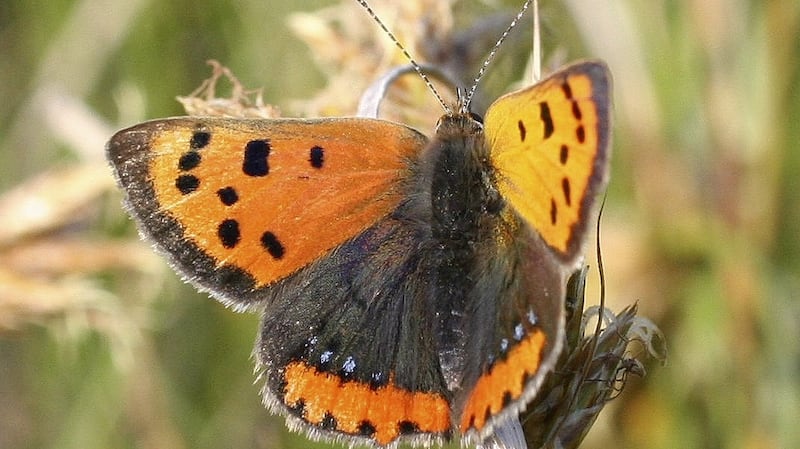Butterfly populations in Ireland showed healthy growth in 2020 with some species boosted by good weather in late spring and early summer.
The multi-species butterfly index which tracks the populations of 15 of the commonest species shows populations have continued to grow from the lows of 2016.
Butterflies emerged early in 2020 with counts for April being almost double the overall average for the month since 2008.
Overall, however, there are still fewer butterflies than in 2008 – the base year of the scheme – although the decline is now less than 1 per cent.
The index, derived from the amalgamation of the population trends from 2008 to 2020, is compiled by the National Biodiversity Data Centre (NBDC) with the help of a large network of citizen scientists under the Irish Butterfly Monitoring Scheme.
Some species are shown by the research to have fared especially well. Populations of small tortoiseshell butterflies increased significantly in 2020, moving from a stable population to one showing a 6 per cent increase on 2008.
Fine weather
"This was due to the fine weather early in the year resulting in a very large second generation in late summer," said NBDC director Dr Liam Lysaght.
The overall improvement over the past five years is probably due to generally favourable summer conditions in successive years, he said.
Four other butterfly species – peacock (almost double 2008 levels); brimstone, dingy skipper and holly blue – showed increased numbers in 2020.

Small heath and small copper, however, continue to decline and while the rate of decline lessened last year, small heath numbers have halved.
Green-veined white populations continued to decline - which may be due to high levels of nitrogen in their ecosystems - showing a 43 per cent loss of since 2008.
Two of the most common migratory species, the red admiral and painted lady experienced contrasting fortunes in 2020.
Red Admiral populations continued to increase and are now 60 per cent more abundant compared to 2008. However, fewer painted lady butterflies were seen last year than any of the previous 12 years.
The numbers of migratory species by their nature fluctuate from year to year, yet the change in the number of painted lady butterflies is dramatic, Dr Lysaght confirmed.
The monitoring scheme was established because butterflies are sensitive to changes in their environment making them good indicators of land use and climate change.
‘A generation gap’
The species most susceptible to climate change is probably the wall brown butterfly, Dr Lysaght said. Its population has plummeted while the species has increasingly moved away from central areas of the country to the coast. It is believed that it is succumbing to “a generation trap”.
Butterflies normally have two generations in a year, but warmer autumns means the species is trying unsuccessfully to complete a third generation which disrupts its lifecycle.
The monitoring scheme involves volunteers walking a fixed route known as a transect each week when weather conditions are favourable, counting all the butterflies seen.
“It is a huge voluntary effort by citizen scientists, with 97 transects walked by 73 volunteers counting 26,547 individual butterflies. Unfortunately there are not sufficient sites monitored of our rarer or localised species to enable their populations to be tracked,” Dr Lysaght added.
The NBDC would like very much to extend monitoring to new sites as currently only common species are being monitored, when there is a strong case to check for local species.












